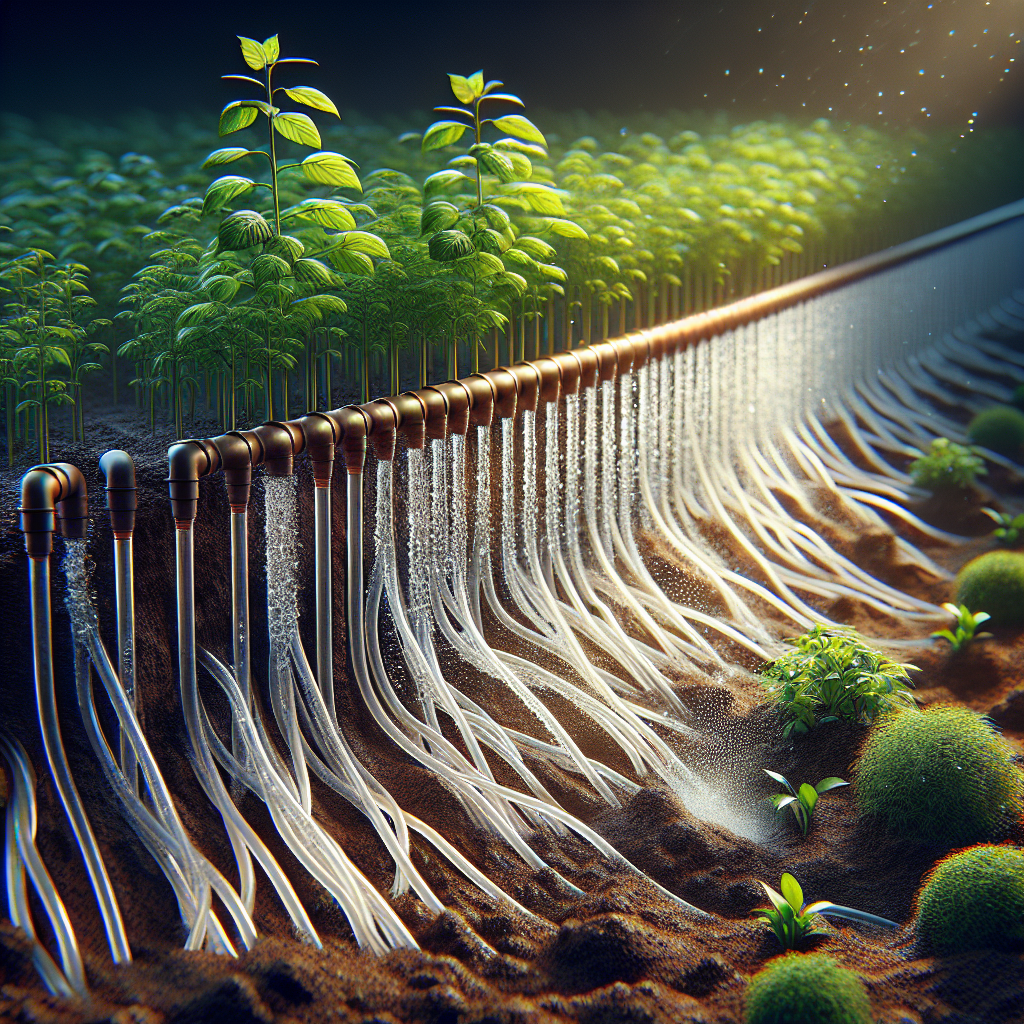Keeping it Steady: How Slow Drip Irrigation Nurtures Plant Growth
Introduction
As the global population continues to grow and natural resources become increasingly scarce, the need to find sustainable ways to grow food becomes more urgent. One of the key challenges in agriculture is efficiently watering crops to ensure they receive the right amount of water without wasting resources. Slow drip irrigation is a method that has gained popularity in recent years for its ability to provide plants with a consistent water supply while minimizing water use. In this article, we will explore the benefits of slow drip irrigation and how it nurtures plant growth.
What is Slow Drip Irrigation?
Slow drip irrigation, also known as micro-irrigation or trickle irrigation, is a method of watering plants by delivering a slow and steady flow of water directly to their roots. This is achieved by using a system of pipes, tubing, and emitters that deliver water at a controlled rate directly to the base of each plant. Unlike traditional irrigation methods such as sprinklers or flood irrigation, which can lead to water waste through evaporation and runoff, slow drip irrigation delivers water precisely where it is needed, ensuring maximum efficiency.
Benefits of Slow Drip Irrigation
1. Conserves Water: One of the biggest advantages of slow drip irrigation is its ability to conserve water. By delivering water directly to the roots of plants at a controlled rate, this method reduces evaporation and runoff, ensuring that every drop counts. As a result, slow drip irrigation can help farmers save water and reduce their overall water usage.
2. Promotes Plant Health: Slow drip irrigation nurtures plant growth by promoting healthier root systems. By delivering water directly to the roots, plants are able to absorb nutrients more efficiently and develop stronger root systems. This leads to healthier plants that are more resilient to stressors such as drought or disease.
3. Reduces Weeds and Pests: Traditional methods of irrigation such as sprinklers can lead to moisture on plant leaves, creating an ideal environment for weeds and pests to thrive. Slow drip irrigation avoids wetting plant foliage by delivering water directly to the roots, reducing weed growth and pest infestations.
4. Customizable: Slow drip irrigation systems can be easily customized to meet the specific needs of different crops or planting arrangements. Farmers can adjust the flow rate and timing of watering based on factors such as soil type, weather conditions, or plant type.
5. Energy-efficient: Compared to traditional irrigation methods that require high-pressure pumps or large volumes of water, slow drip irrigation is energy-efficient due to its low-pressure delivery system. This can help farmers reduce their energy costs and carbon footprint.
How Slow Drip Irrigation Nurtures Plant Growth
1.Provides Consistent Water Supply: One of the key benefits of slow drip irrigation is its ability to provide plants with a consistent water supply. By delivering water slowly over an extended period, this method ensures that plants receive a steady supply of moisture without experiencing periods of drought or excess moisture.
2.Ensures Even Distribution: Another advantage of slow drip irrigation is its ability to ensure even distribution of water throughout the root zone. Unlike traditional methods such as overhead sprinklers that can lead t uneven watering patterns droughts or flooding), slow drip irrigation delivers water directly where it is needed most – at the roots.
3.Reduces Soil Erosion : Traditional methods like floodirrigationcan cause soil erosion due t excessivet surface-runoff whilerteadily increasing thee risk offloodings.Low-drip iriigaiton,onthe other hand,minimizes these risks ycodelivering wateer nirectlytotheplantsroots,tUsmaintainingsoilentstructureandpreventingerosion,.
4.Promotes Nutrient Uptake : A key aspect offslowdripiirrigationissttheprovisionnofwateerndirectlyttotheplatsrootsforabsorption.Thisenablesplansstotakkeupmmorenutrientsfroothesoilmorefficientlyascomparedttotradditionalmethods,thispromotesshealthyplantgrowthanddevelopment,.
5.Reduces Disease Risk : Overheadowateringconbefaatrus,,ascitcanleadtowetleavesandmhummidconditionswhicchfavortheegrowthofdiseases-causinbgacteriaanfungi,.Slow-dRipiiurriagaatiomninimizesthissriskb ,ydeliveringwtaeterdirectltytotherootsofplantsandinotwetitringfoliage,.
Conclusion
Slow dripiirrigationnisisacosterffectivemethodofwateringpplantstthatpromotesheallthygroowthandmaximizeswateruseefficiency.Itsalloosimisreduceswateraste,rprmomotesplanthealth,andcancbeucustomizedtmeetstheeedcessoffdifferentcroppsandssoilconditions.,BByearracingprinciplesofsustaiinabilityandiinncorporatingslowiddripiriigaatiointoaaagrictlturalppractices,farmersacrosstheworldccanbenefitfrommimmprovedcropproducitvityanresourceconservatiorn.,Keepingiittteddywiithslowidripiriigaatioinnnurturingplntgrrowthisaanimportantstepninpromotingaasustainableaggriculturalfuture..













